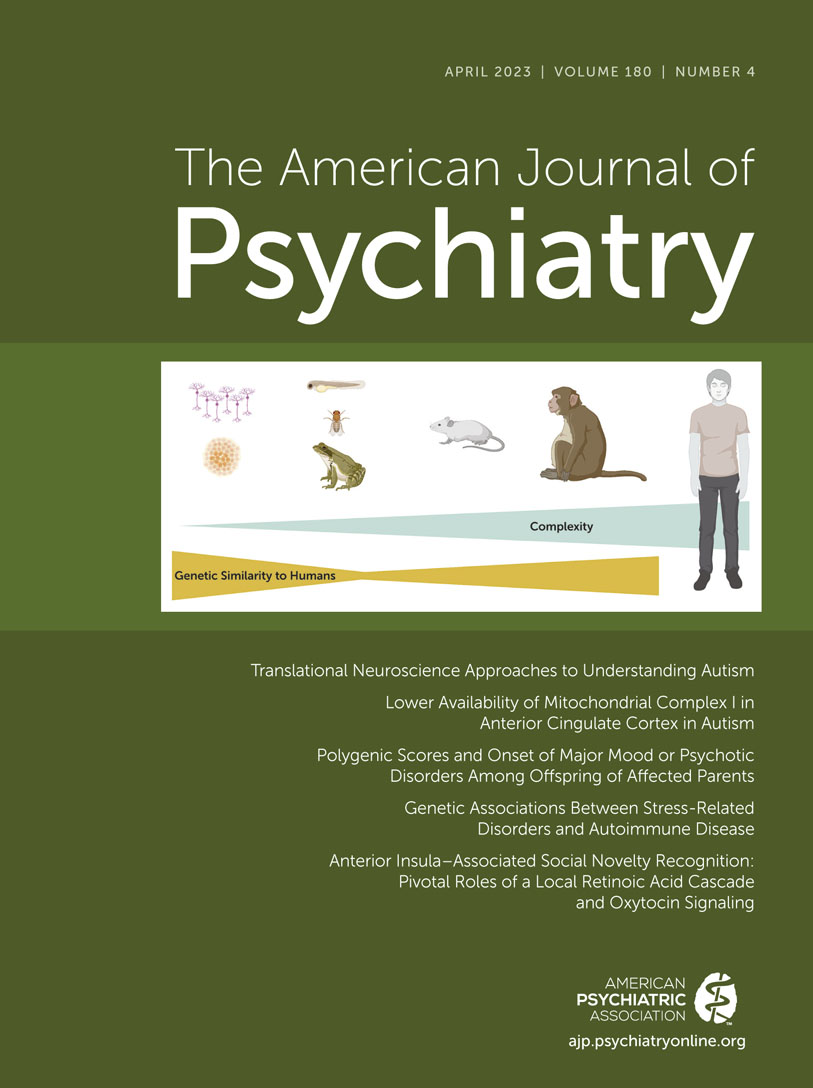Acute Stress, Traumatic Brain Injury, and Dissociation
To the Editor: Lebois and colleagues’ “Persistent Dissociation and its Neural Correlates in Predicting Outcomes after Trauma Exposure” (1) prospectively demonstrates that dissociation 2 weeks posttrauma predicts posttraumatic stress at 3 months, independent of childhood maltreatment and initial posttraumatic stress severity. Given the major clinical importance of this finding, a few points deserve mention.
While emphasizing the importance of persistent (as opposed to peritraumatic) dissociation in PTSD prediction, the article overlooks the acute stress disorder (ASD) literature. Yet ASD assesses just that: dissociation from 2 days to 4 weeks posttrauma. Contradicting this study’s findings, DSM-IV ASD did not have adequate predictive power for subsequent PTSD, possibly because it required “too much” dissociation (presence of three out of five symptoms) (2); DSM-5 ASD no longer requires dissociative symptoms.
Dissociation is a broad phenomenon encompassing a variety of subjective experiences. It is not quite accurate to state that the study focused solely on derealization: the focus is on both derealization (DR) and depersonalization (DP). Though the self-report dissociation measure consisted solely of DR, the emotional reactivity neuroimaging task reflects the emotional detachment, hypoemotionality, and numbing that constitute one of the cardinal domains of DP (3), first conceptualized as subsumed by corticolimbic disconnection in the 1990s (4).
Given that most of the study sample experienced motor vehicle accidents, the absence of data on traumatic brain injury (TBI) is surprising—mild TBI is often associated with persistent brain fog, essentially indistinguishable from psychogenic derealization, and with PTSD. Alert and oriented at the time of enrollment and exclusion of more severe physical injury do not preclude mild TBI (5, 6). It would have been helpful to know whether persistent derealization predicts later posttraumatic stress independent of TBI; this would support generalizability to other types of traumas.
Furthermore, the mostly noninterpersonal nature of traumas in this study may have lessened the predictive power of childhood maltreatment for adult PTSD (7). Finally, given the increasing attention to the DSM-5 dissociative subtype of PTSD (D-PTSD) and its treatment implications it would have been interesting to repeat the subjective derealization measure at 3 months, to elucidate the time course of DR from 2 weeks to 3 months and its predictive power for D- versus non-D- PTSD.
1. : Persistent dissociation and its neural correlates in predicting outcomes after trauma exposure. Am J Psychiatry 2022; 179:661–672Link, Google Scholar
2. : A review of acute stress disorder in DSM-5. Depress Anxiety 2011; 28:802–817Crossref, Medline, Google Scholar
3. : De-constructing depersonalization: further evidence for symptom clusters. Psychiatry Res 2008; 157:303–306Crossref, Medline, Google Scholar
4. : Depersonalization: neurobiological perspectives. Biol Psychiatry 1998; 44:898–908Crossref, Medline, Google Scholar
5. : Causes and outcomes of mild traumatic brain injury: an analysis of Ciren data. Annu Proc Assoc Adv Automot Med 2003; 47:577–589Medline, Google Scholar
6. : Relationship between acute stress disorder and posttraumatic stress disorder following mild traumatic brain injury. Am J Psychiatry 1998; 155:625–629Link, Google Scholar
7. : Childhood adversities and post-traumatic stress disorder: evidence for stress sensitisation in the World Mental Health Surveys. Br J Psychiatry 2017; 211:280–288Crossref, Medline, Google Scholar



